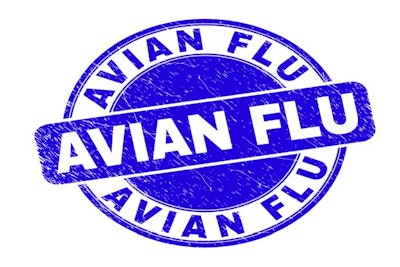
In South Africa’s Western Cape, four new highly pathogenic avian influenza (HPAI) outbreaks have been confirmed at poultry farms. According to News 24, the affected premises are near Worcester, Malmesbury, and Hopefield. The presence of the H5 HPAI virus has been confirmed at two of the locations. For the other outbreaks, the investigations are ongoing.
According to the Department of Agriculture, Land Reform and Rural Development (DALRRD), the outbreaks appear to be caused by different strains of the virus. Affected farms have been quarantined while investigations are ongoing.
South Africa: 10 outbreaks since March
Since the beginning of March, South Africa’s animal health authority has registered a total of 10 HPAI outbreaks linked to a virus of the H5 family. This total includes seven confirmed so far this month, according to official reports received by the World Organisation for Animal Health (OIE).
The first outbreak in the current wave was in early March, affecting a farm at Ekurhuleni in Gauteng province. This was followed by new infections near Tshwane city in the same province, and then Tlokwe, which is located in the Dr Kenneth Kaunda district of the North West, which borders Gauteng.
Since the start of May, the HPAI virus has been detected at two more farms in Gauteng, one each in Free State, Mpumalanga and the North West, as well as two more much further west in Western Cape province. Affected flocks ranged from around 7,000 for 240,000 birds.
So far, direct losses through mortalities and culling amount to more than 476,000 poultry in this South Africa HPAI wave.
Learning lessons from previous outbreaks, getting prepared
When HPAI first arrived in South Africa in June of 2017, the infection spread very rapidly, according to Izaak Breitenbach in the latest Poultry Bulletin from the South African Poultry Association (SAPA), Breitenbach is the general manager of the Broiler Organisation of SAPA.
In the end, 5.4 million poultry were culled to prevent the further spread of infection. This included 4.7 million hens — 20% of the nation’s laying flock. Overall losses from culls, mortalities, direct costs and income lost amounted to more than 1.87 billion rand (ZAR; US$13.3 million), he said.
Furthermore, 1,300 people lost their jobs in the poultry sector. The following rise in prices put poultry products out of reach for some South Africans.
“Having the situation repeat itself is something the country cannot afford, especially not amid the COVID-19 pandemic, which is taking a huge toll on the economy and resulting in widespread job shedding,” said Breitenbach.
Vaccination: not an option
Currently, vaccination of poultry against HPAI is not permitted in South Africa, according to Dr. Mpho Maja, director of animal health at DALRRD. Vaccines currently available commercially do not have DIVA capability, she said. This means that vaccinated birds cannot be distinguished from those that have been naturally infected.
Furthermore, any such vaccination program would have to follow OIE recommendations, and an exit strategy would need to be agreed so that the country could regain its former HPAI-free status.
Another hurdle is that vaccination would not prevent the birds becoming infected. That can mask clinical symptoms, making it difficult to detect new outbreaks, and the vaccinated birds will still shed virus.
Mali records fourth HPAI outbreak
Earlier this month, the West African state officially registered one new outbreak of HPAI with the OIE.
According to the report, the H5N1 virus subtype was detected at a farm with more than 80,000 poultry in the second week of April. This total comprised four layer flocks aged 15-28 weeks. More than 64,000 of these birds died.
The farm was located near Marakoforo in the region of Koulikoro, which borders Mauritania, and is in the southwest of the country.
Over the period March 13-23 of this year, Mali registered its first outbreaks of HPAI linked to this virus subtype. Involved in these outbreaks were 50,150 poultry at two farms — one in Koulikoro and one in neighboring Sikasso, as well as a backyard flock in the Bamako city region.
Further outbreaks in Nigeria
Around 50,000 poultry have been lost to HPAI in the state of Bauchi, reports Guardian of Nigeria. This total includes around 27,000 birds that were culled to prevent further spread of the infection.
According to the United Nations’ Food and Agriculture Organization (FAO), there have been 24 outbreaks of HPAI linked to the H5N1 virus since October of 2020. These have affected a number of bird species including chickens and turkeys in eight states.
HPAI situation elsewhere in Africa
In addition to these outbreaks in Mali, Nigeria, and South Africa, FAO has also recorded outbreaks linked to the H5N1 virus in Mauritania, Niger, and Senegal. In each country, cases were confirmed at the end of last year, but none so far in 2021.
In South Africa’s Western Cape, the H5N8 HPAI virus was last detected in one flock of unspecified domestic birds in November of last year.
In mid-January, the same virus was found at a poultry farm in Algeria after heavy mortalities were reported in the affected flocks.
View our continuing coverage of the global avian influenza situation.

















